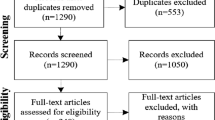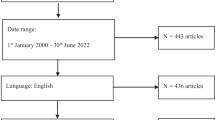Abstract
Context-awareness holds promise for improving the utility of software products. Context-aware mobile systems encompass the ability to automatically discover and react to changes in an environment. Most contemporary context-aware mobile systems aim to support users in private situations, for example, as tourist guides. Thus, we still lack an understanding of the impact of context-awareness in professional work situations. In this paper, we explore context-awareness for mobile electronic patient records through the design of a context-aware mobile prototype called MobileWard. The aim of MobileWard is to support nurses in conducting morning procedures in a hospital ward. MobileWard is context-aware as it is able to discover and react autonomously according to changes in the environment and since it integrates the ability to provide information and services to the user where the relevancy depends on the user’s task. We evaluate MobileWard in two usability evaluations to assess the usefulness of the system and we find that context-awareness holds some promising opportunities, but that it also introduces some potential interaction problems when users are mobile and working in a professional environment. Implications and limitations of the proposed solution are further discussed.



Similar content being viewed by others
References
Barkhuus L, Dey A (2003) Is context-aware computing taking control away from the user? Three levels of interactivity examined. In: Proceedings of the UbiComp2003 conference, LNCS 2864, pp 149–156
Luff P, Heath C (1998) Mobility in collaboration. In: Proceedings of CSCW’98. ACM, New york, pp 305–314
Schmidt K, Heath C, Rodden T (2002) Preface to special issue on awareness. Comput Support Coop Work 11:iii-iv
Cheverst K, Davies N, Michell K (2002) A reflective study of the GUIDE system. In: Proccedings of the 1st workshop on mobile tourism support, pp 17–23
Pospischil G, Umlauft M, Michlmayr E (2002) Designing Lol@, a mobile tourist guide for UMTS. In: Proceedings of the 4th conference of mobile human-computer interaction, Springer, Berlin Heidelberg New york, LNCS, pp 140–154
Hartswood M, Procter R, Rouncefield M, Slack R (2003) Making a case in medical work: implications for the electronic medical record. Comput Support Coop Work 12:241–266
Hanseth O, Lundberg N (2001) Designing work oriented infrastructures. Comput Support Coop Work 10:347–372
Tellioglu H, Wagner I (2001) Work practices surrounding PACS. The politics of space in hospitals. Comput Support Coop Work 10(2):163–188
Bardram JE (2000) Temporal coordination. Comput Support Coop Work 9:157–187
Ellingsen G, Monteiro E (2003) A patchwork planet: integration and cooperation in hospitals. Comput Support Coop Work 12:71–95
Grimson J, Grimson W, Hasselbring W (2000) The SI challenge in healthcare. Commun ACM 43(6):49–55
Hanseth O, Monteiro E (1998) Changing irreversible networks. In: Proceedings of BCIS. Aix-en-Provence
Van Bemmel JH, Musen MA (1997) Handbook of medical informatics. Springer, Berlin Heidelberg New york
Sellen A, Harper R (2002) The Myth of the paperless office. MIT Press, Cambridge
Bardram J, Kjær TAK, Nielsen C (2003) Supporting local mobility in healthcare by application roaming among heterogeneous devices. In: Proceedings of the 5th conference of mobile human-computer interaction. Springer, Berlin Heidelberg New york, LNCS 2795, pp 161–176
Brinck T, York G (1998) User interfaces for computer-based patient records. In: Proceedings of human factors in computing systems CHI’98, ACM, Cambridge, pp 214
Høegh RT, Skov MB (2004a) MobileWard: a context-aware mobile system supporting work in a hospital ward. In: Proceedings of the IADIS applied computing 2004 conference, pp II–218–II–223
Høegh RT, Skov MB (2004b) Exploring context-awareness as mean for supporting mobile work at a hospital ward. In: CD-Proceedings of the 7th international conference on work with computing systems (WWCS 2004)
Rindfleish TC (1997) Privacy, information technology, and health care. Commun ACM 40(8):93–100
Kjeldskov J (2002) “Just in place” information for mobile device interfaces. In: proceedings of the 4th conference of mobile human–computer interaction. Springer, Berlin Heidelberg New york, LNCS, pp 271–275
Kjeldskov J, Skov MB, Stage J (2003) Usability evaluation of electronic patient. IBM IPJ 2.3 (the second evaluation) (in Danish), Aalborg University
Abowd GD, Mynatt ED (2000) Charting past, present and future research in ubiquitous computing. ACM Transact comput Hum interact 7(1):29–58
Schilit BN, Theimer MM (1994) Disseminating active map information to mobile hosts. IEEE Netw 8(5):22–32
Chen G, Kotz D (2000) A survey of context-aware mobile research. Technical Report TR2000–381, Department of Computer Science, Dartmouth College
Dey AK (2001) Understanding and using context. Pers Ubiquitous Comput 5:4–7
Rodden T, Cheverst K, Davies N, Dix A (1998) Exploiting context in HCI design for mobile systems. In: Proceedings of the 1st workshop on human computer interaction with mobile devices
Schilit BN, Adams N, Want R (1994) Context-aware computing applications. In: Proceedings of workshop on mobile computing systems and applications. IEEE, pp 85–90
Selker T, Burleson W (2000) Context-aware design and interaction in computer systems. IBM Syst J 39(3+4):880
Bohnenberger T, Jameson A, Krüger A, Butz A (2002) Location-aware shopping assiatnce: evaluation of a decision-theoretic approach. In: Proceedings of the 4th conference of mobile human-computer interaction. Springer Berlin Heidelberg New york, LNCS, pp 155–169
Kjeldskov J, Graham C (2003) A review of mobile HCI research methods. In: Proceedings of the 5th conference of mobile human-computer interaction. Springer, Berlin Heidelberg New york, LNCS 2795, pp 317–335
Kjeldskov J, Skov MB, Stage J (2002) Usability evaluation of electronic patient. J IBM IPJ 2.3 (in Danish), Aalborg University
Ebdrup M (2003) Finsenscentret vil afskaffe kragetæer som årsag til medicinfejl. At www.dagensmedicin.dk. Dagens Medicin
Kjeldskov J, Skov MB, Als BS, Høegh RT (2004) Is it worth the hassle? Exploring the added value of evaluating the usability of context-aware mobile systems in the field. In: Proceedings of the 6th international conference on human computer interaction with mobile devices and services (MobileHCI 2004), Springer, Berlin Heidelberg New york, LNCS 3160, pp 61–73
Kjeldskov J, Skov MB (2003) Creating realistic laboratory settings: comparative studies of three think-aloud usability evaluations of a mobile system. In: Proceedings of the 9th IFIP TC13 international conference on human-computer interaction (Interact2003). IOS Press, Amsterdam, pp 663–670
Molich R (2000) Usable web design (in Danish). Ingeniøren | bøger
Moran T, Dourish P (2001) Introduction to this special issue on context-aware computing. Hum Comput Interact 16:87–97
Lieberman H, Selker T (2000) Out of the context: computer systems that adapt to, and learn from, context. IBM Syst J 39(3&4):617
Kristoffersen S, Ljungberg F (1999) Mobile use of IT. In: Proceedings of the 19th information system research in Scandinavia. Jyväskylä, Finland
Acknowledgements
The work behind this paper received financial support from the Danish Natural Science Research Council (grant no. 21-03-0301) and the Danish Research Agency (grant no. 2106-04-0022). We would like to thank the participating nurses at Frederikshavn Hospital. Also, we would like to thank Karsten Kryger Hansen and Søren Lauritsen in the development of MobileWard. Finally, we would like to thank the anonymous reviewers for comments on earlier drafts of this paper.
Author information
Authors and Affiliations
Corresponding author
Rights and permissions
About this article
Cite this article
Skov, M.B., Høegh, R.T. Supporting information access in a hospital ward by a context-aware mobile electronic patient record. Pers Ubiquit Comput 10, 205–214 (2006). https://doi.org/10.1007/s00779-005-0049-0
Received:
Accepted:
Published:
Issue Date:
DOI: https://doi.org/10.1007/s00779-005-0049-0




